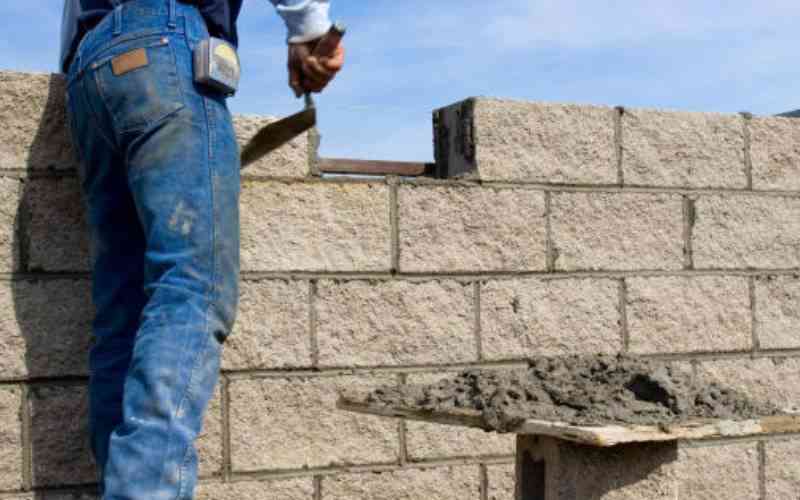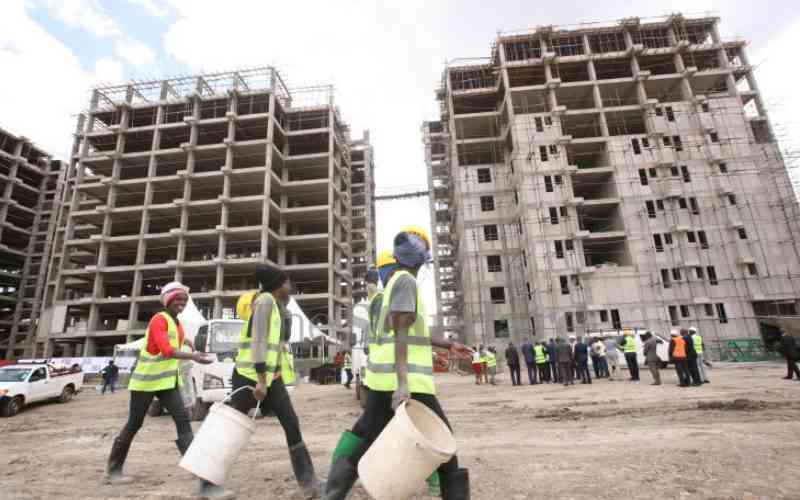The shelter of choice when disaster strikes has always been tents. However, a new approach pioneered by a Kenyan is picking up as Kevin Oguoko found out
When skirmishes and disasters strike most parts of the world, organisations move in to provide emergency services to the affected people. In the case of violence and natural disasters, one of the most basic items needed urgently is shelter.
The most common shelter provided is tents. While a tent does its best to curb against immediate threats and dangers, it has a few shortcomings and is normally used as a temporary measure.
In the place of tents comes a new housing innovation originating from within Kenya’s borders, set to fill the void created by tents. It has been named HabiHut.
“The average tent lasts one year. Besides this, tents are not really adequate to protect one against harsh weather conditions and are easily penetrated,” says Ronald Omyonga, a Kenyan architect and co-founder of HabiHut Company.
HabiHut, a brainchild of Ronald and two American partners, was designed specifically for relief housing. The HabiHut unit creates the framework for setting up, off the grid villages where they are most needed.
Shelter
While maintaining the elements of a tent in terms of ease and timesaving and ease of setting each unit, it also comes with added comfort and longevity of the average permanent house.
During the Haiti earthquake, HabiHut units were set up to house people who lost their homes. Approximately 25 units were constructed with the finance of an American movie star.
In Afghanistan, HabiHut is being used by the US Army to construct schools for Afghani children, with a pilot project of 20 units already used and much more expected to be taken up.
Despite its efficiency, the main reason why not so many humanitarian organisations have not invested in HabiHut units has to do with its cost. “The average tent goes for about $500 (about Sh43,000) while one housing unit goes for $2500 (about Sh215,000). This has been our major challenge in marketing HabiHut units,” says Ronald.
HabiHut has been demonstrated to the Kenya Wildlife Service for use as shelter for their rangers and the Kenya Red Cross for humanitarian activities.
Functions
A HabiHut unit has the ability to house different functions from waste management, to water solutions. The HabiHut modular design has been used to construct water kiosks in slum areas of Korogocho and Kiserian in partnership with Water Services Trust and Umande Trust.
The water kiosks are constructed to provide clean and safe water for residents as well as provide a source of income for the kiosk owners.
Stay informed. Subscribe to our newsletter
How it works
The HabiHut can be shipped, unpacked and assembled quickly. Each unit weighs less than 190 kilogrammes and can be constructed by three labourers in less than two hours provided they have the instructions and setting up manual.
The units can also be easily moved, for added flexibility and future redeployment. Minimal tools are required.
“There are three stages in a disaster. There is the emergency phase, transition and resettlement phase. Our aim was to design a housing model that could be used in all the three stages and the refugees can actually take the building back home with them,” explains Ronald.
It has a lifespan of ten years and each unit comes with a five-year warranty. To make it strong yet less complicated, the HabiHut is built with specialised materials. It is made of high-density plastic. But this is not just any other plastic as it is UV resistant and treated to prevent it from cracking, peeling or fading. It is also known as polypropylene copolymer plastic panels.
The panels are weather resistant to protect inhabitants from exposure to the elements. The supporting frame structure also features high strength extruded aluminum that does not rust or deteriorate easily. All parts are interchangeable, so future repairs are convenient.
Layer panels inside the HabiHut have an internal air pocket that provides insulation from outside temperatures and UV protection.
The room temperatures are also controlled by cross ventilation from the hexagonal shaped roof and windows, so air is constantly in circulation, while maintaining comfortable indoor temperatures.
They come in a range of customised colours, quite comfortable to live in, especially in harsh weather climates experienced in the northern parts of Kenya.
In addition, the roof panels have a light colour and are translucent to provide abundant natural light.
The HabiHut’s internal anchoring system and architectural features also provide superior wind resistance and security against theft.
 The Standard Group Plc is a
multi-media organization with investments in media platforms spanning newspaper
print operations, television, radio broadcasting, digital and online services. The
Standard Group is recognized as a leading multi-media house in Kenya with a key
influence in matters of national and international interest.
The Standard Group Plc is a
multi-media organization with investments in media platforms spanning newspaper
print operations, television, radio broadcasting, digital and online services. The
Standard Group is recognized as a leading multi-media house in Kenya with a key
influence in matters of national and international interest.
 The Standard Group Plc is a
multi-media organization with investments in media platforms spanning newspaper
print operations, television, radio broadcasting, digital and online services. The
Standard Group is recognized as a leading multi-media house in Kenya with a key
influence in matters of national and international interest.
The Standard Group Plc is a
multi-media organization with investments in media platforms spanning newspaper
print operations, television, radio broadcasting, digital and online services. The
Standard Group is recognized as a leading multi-media house in Kenya with a key
influence in matters of national and international interest.









